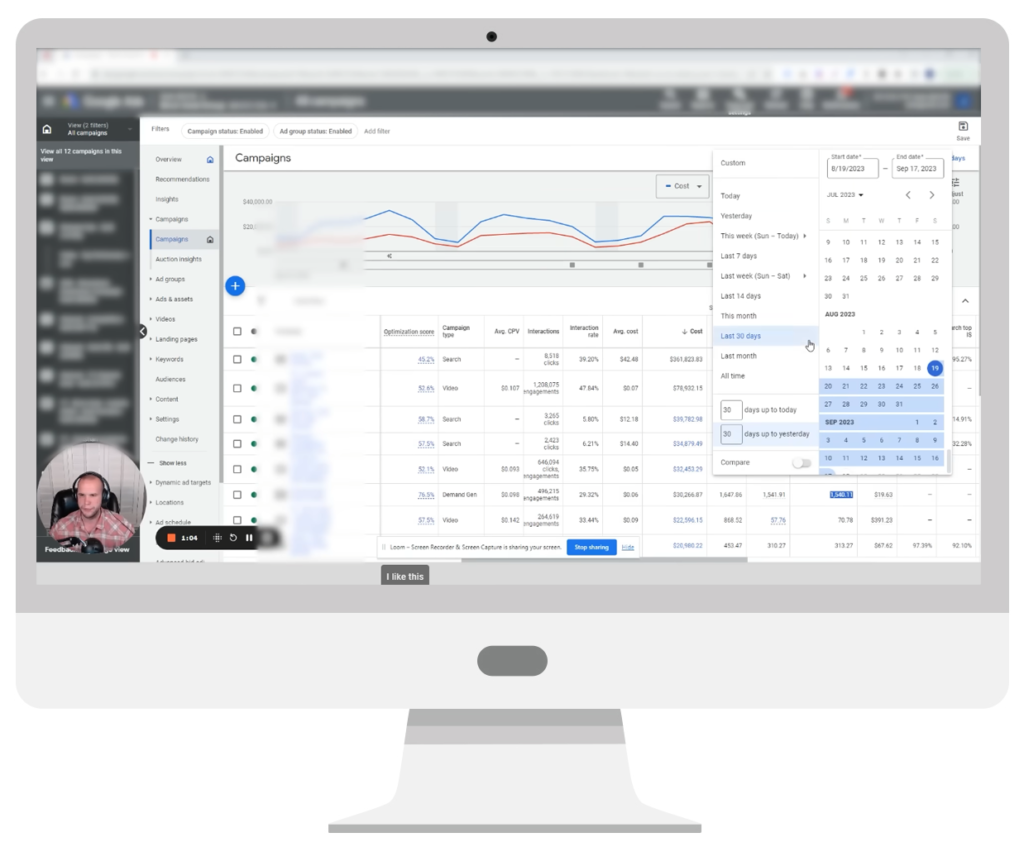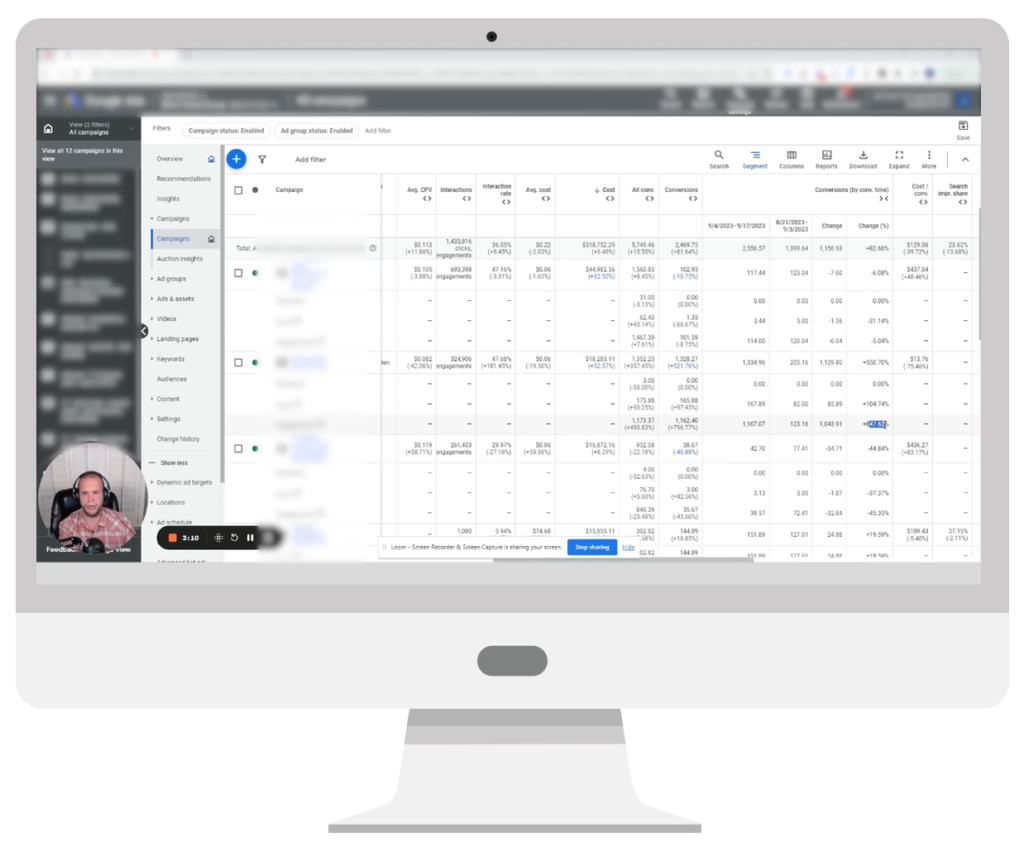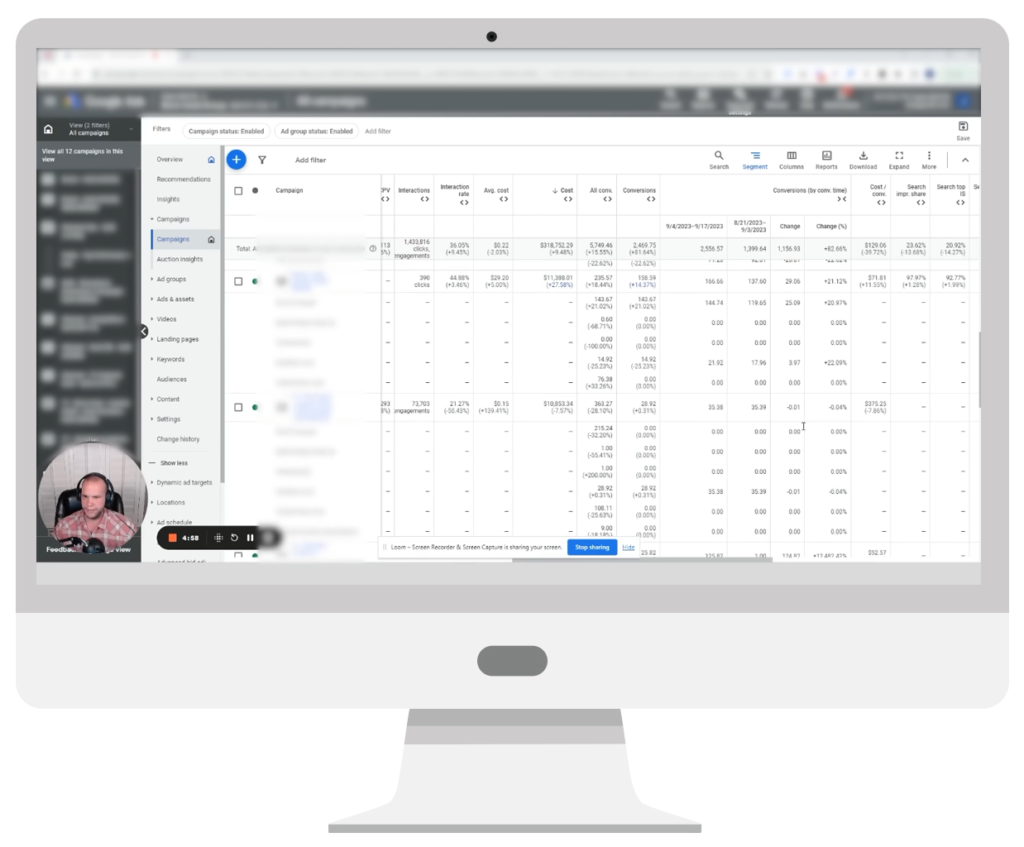You’ve probably noticed a common theme in digital marketing recently: AI-powered everything.
Google Ads‘ newest campaign type, the Demand Gen campaign, is no exception.
Introduced earlier this year in beta, Demand Gen campaigns are now available to all advertisers and have been hailed by Google as a way to create “smarter campaigns” using the power of Google AI.
But, is Demand Gen everything it’s cracked up to be?
Solutions 8 Chief Strategist John Moran recently created this video to share his initial thoughts, and he started off with this nugget of wisdom:
"They might look like they're doing better than they actually are."
Which is why he says to always verify things with data.
And speaking of data, John uses the example of a Demand Gen campaign he created for a Solutions 8 client. The campaign had been running for a little over three weeks, and he said he and the team saw some “massive changes” in the account that looked good initially…
…but that fell apart as soon as they started to dig a little bit deeper.
While the cost stayed roughly the same—around $30K—after about 20 days they saw a significant increase in conversions (from 137 to 377) that they figured must be attributed to the new campaign.
According to John, “This Demand Gen campaign is all of a sudden seeing 1,500 conversions; it’s our biggest conversion generator in the account… or so we thought.”
What does that mean?

You can follow along beginning at 1:04 in the video, when he splits the campaign in half to compare the first two weeks with the last two weeks.
“You can see the cost went up 9.48% but the Conversions and Conversions by conversion time are both up 80% or more so that’s a massive increase for the same costs, and all of a sudden being able to go from 1,400 conversions adding 1,100 to it to 2,500; that is huge!”
Demand Gen shows that Conversions went from 205 to 1,334—a 550% increase with only a 52 increase in cost. Now, you might just attribute this to Demand Gen and think it’s the greatest thing since sliced bread, but hold up says John.
Because what do we always say when things seem too good to be true in Google Ads?
They probably are.
So, John and his team dug a little deeper.
They started to look at the conversion actions and saw that the Demand Gen campaign showed a sudden spike in info kit requests—from 744 to 1,400 (a 90% increase!).
But while they thought for sure that whopping increase would also lead to an influx in qualified leads, that influx just wasn’t there. In fact, they saw fewer qualified leads.
So, where were the missing leads? (Hint: It wasn’t due to a conversion delay.)
That’s when John says they started to look at what type of conversions they were, and when they looked at “Ad event type,” they saw that the Demand Gen campaign had an Engaged-view conversion that had spiked up to a thousand more than it did the previous two weeks, skyrocketing from 205 to 1,334.
Now, clicks started to increase as well, which is good, and John says that the rise in clicks was about average relevant to cost, but when they looked at the actual Engaged-view conversions, that went up 847%.

“That’s why these people aren’t in our system; they’re not newer people, they’re just people that were going to be converting anyway that simply were shown an ad,” says John.
And the way you identify that, he explains, is by looking at the Format (video only), which will actually tell you that Demand Gen (in this example) has 1,325 conversions in skippable in-stream ads.
We see this with YouTube quite often, where if you’re not removing the warm traffic (i.e., not excluding 90 days worth of website visitors—or more, if you want to), the YouTube portion of any campaign type—whether it be Demand Gen, PMax or YouTube—will start to give a crazy amount of Engaged-view conversions to people who are already going to convert.
Why does this happen inside of Demand Gen?
While setting (and hitting) a target CPA may keep it from spiking up, with a Maximize conversions bid strategy, it doesn’t matter where it’s going to attribute these; it’s going to find them anywhere it can, says John, and so in this case it’s found of a bunch of warm audiences that it gets to take all of the Engaged-view attribution for.
That’s what’s interesting, says John. We didn’t actually see any new traffic to the site (or we saw a little but not enough to account for the 550% increase in Conversions).
“They didn’t have UTM parameters either; we saw an increase in UTM parameters but where we didn’t actually see the people filling out the form with the UTM parameter of Demand Gen means that this is the reason why. We didn’t really have much of an increase in leads. We didn’t have much of an increase in the UTMs attributed to Demand Gen, but Google will say ‘Hey, it’s doing 550 better this last two weeks than the previous two weeks.'”
According to John, this was verified by CRM data but also verified by looking at Conversion action, and the Conversion action of the info kit requests for this client’s campaign didn’t match the qualified leads we had that were the same leads.

Of course, you could just say it's creating demand.
Okay, says John, but looking at the Brand campaign he is vastly out-spending what they can actually attribute as a daily ad spend.
“I am capturing literally every single person that would ever Google our brand ever and I can only spend about $14K to $15K per day. With a thousand new people interested in our info kit, I should see more branded search, more branded leads. I’m not. I’m actually seeing 14 less inbound branded conversions. So it’s not necessarily generating demand.”
It all comes down to the fact that Google can split attribution, so the numbers you see aren’t always a true representation of what’s actually going on behind the scenes.
In a nutshell, Demand Gen is targeting warmer traffic and simply inserting itself into the conversion path, showing an ad to a person that ends up converting within the same three days that that campaign type is going to be tracking an Engaged-view conversion, counting it as its own, spiking spend, and getting a thousand more conversions—but the result is that brand search may suffer conversions because of it.
So, is Demand Gen truly generating demand?
Or is it simply attributing more existing demand to itself?
That’s the million-dollar question, says John.
In the days ahead, he and his team will be conducting a top-line study to see how many more actual new qualified leads they’ve received.
Bottom line: Investigate a little further.
In John’s words, “I wanted to give you this quick tip just to say investigate a little further, because if I saw my cost per conversion cut in half and get 80–85 percent more conversions after running Demand Gen, you could be really inclined just to triple or double that ad spend because this looks amazing.”
But always dig a little deeper, he cautions.
Always understand your conversion path.
Always measure your new customer acquisition cost (nCAC).
And make sure you triangulate your metrics that you see inside of Google ads—because sometimes it’s just Google getting better at attribution, and you’ll be the one to lose if you base your long-term metrics off of Google’s KPIs.
Author
Pamela is the Senior Content Writer at Solutions 8. When she's not writing, you can find her hiking in the woods with her dogs. She is currently on a quest to visit every national park in the United States.
 Pamela Sapio
Pamela Sapio











